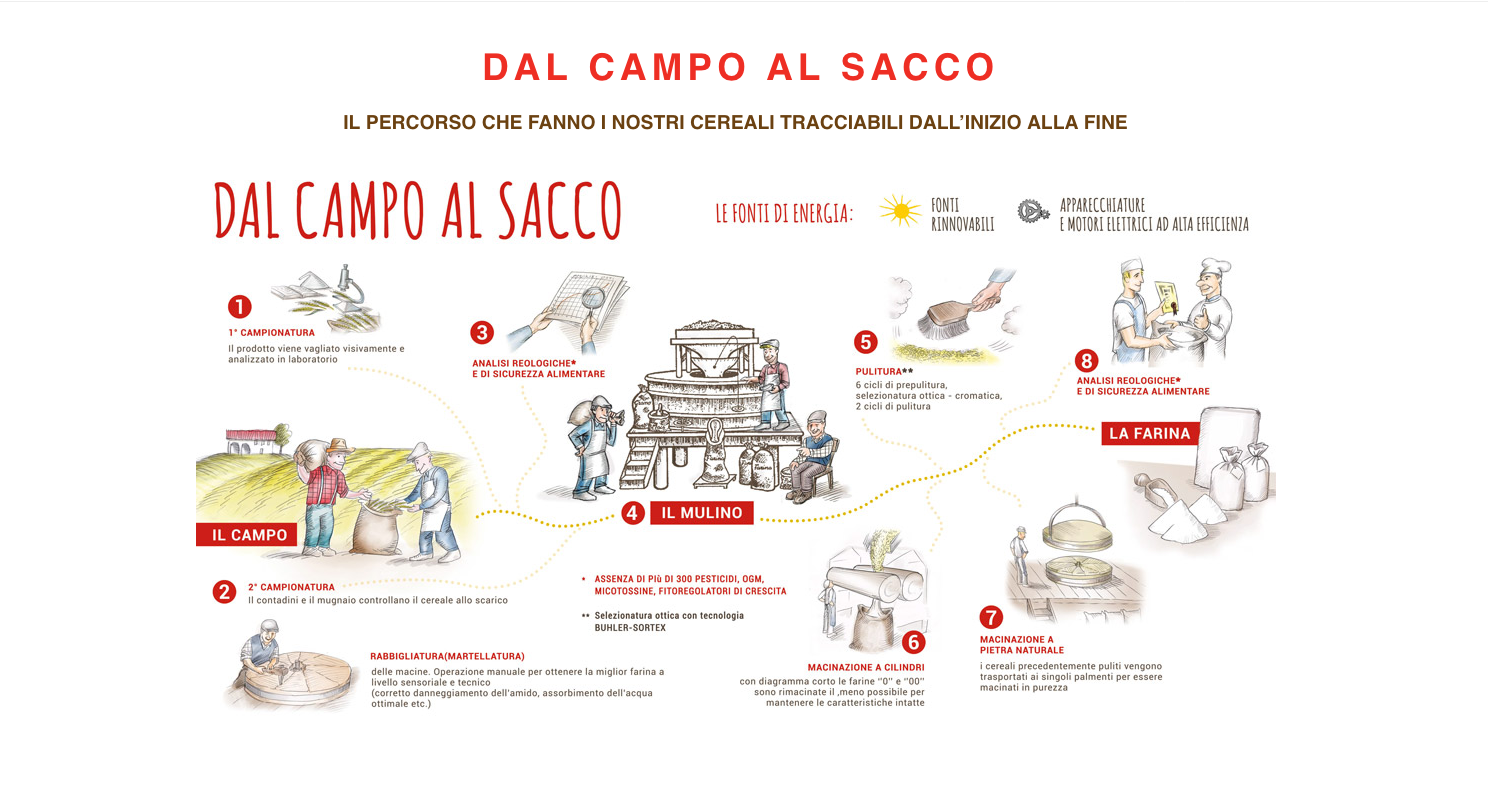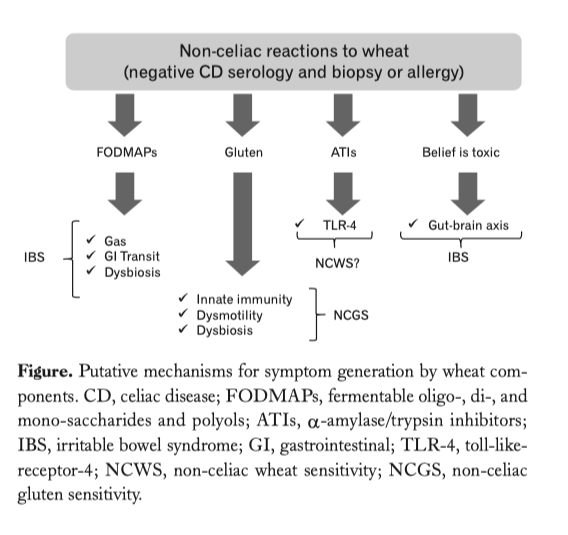Un esempio eccellente: Mulino Marino Cossano Belbo (CN)
Una famiglia di mugnai da tre generazioni che ha impostato la produzione seguendo rigorosi controlli per la sicurezza alimentare e fornendo la completa tracciabilità dal campo al sacco.
La sicurezza alimentare, primo requisito per realizzare prodotti di alta qualità, è assicurata da scrupolosi rapporti di prova ( 1 analisi su un lotto di farina di grano monococco Enkir) che documentano la ricerca nella materia prima, così come nella farina di:
• Più di 600 pesticidi (erbicidi, insetticidi, fungicidi) utilizzati su cereali e farine sia in campo che in magazzino
• Fitoregolatori chimici di crescita (Chlormequat, Mepiquat) che vengono dati in campo per migliorare l’accrescimento della pianta.
• Fosfina (antiparassitario insetticida)
• Glifosate ( antiparassitario erbicida)
• Classe delle micotossine (Aflatossine, DON.)
• Livelli di contaminazione microbiologica.
La tracciabilità inizia dall’analisi del campione di grano fino alle analisi reologiche sulla farina:
1. Analisi del campione di grano
2. Campionatura del cereale allo scarico
3. Analisi reologiche eseguite sul grano
4. Analisi sicurezza alimentare eseguite sul grano
5. Pulitura del grano
6. Macinazione a cilindri per alcune farine
7. Macinazione a pietra naturale per alcune farine
8. Analisi reologiche sulle farine
Una ottima rappresentazione tratta dal loro sito (www.mulinomarino.it):

Con questi criteri vengono prodotte “ farine artigianali, non additivate di nessun miglioratore, non standardizzate e quindi leggermente diverse in ogni momento dell’anno… come la natura, come il grano e come gli esseri umani. Come per chi fa il vino il compito è quello di rispecchiare in bottiglia i grappoli creati dalla vite, le nostre farine sono lo specchio delle spighe di grano sul campo”.
Le farine infine vengono analizzate anche sotto l’aspetto della loro composizione chimica ed energetica offrendo una panoramica dettagliata sui valori di oligoelementi, vitamine, aminoacidi, zuccheri, acidi grassi, ed altri componenti.(2 analisi su farina di grano monococco Enkir).
1 analisi microbiologica su un lotto di farina di grano monococco Enkir
2 analisi chimica su farina di grano monococco Enkir
L’esempio proposto per la sicurezza alimentare e la tracciabilità ha un’importanza fondamentale per il consumatore che ha la necessità, anzi il diritto, di sapere cosa introduce nella sua dieta.
Non va dimenticato che i prodotti a base di grano coprono una importante parte dell’alimentazione e che le problematiche legate alle intolleranze al grano sono in rapido aumento.
In un prossimo futuro auspichiamo che possa essere proposta anche una selezione di varietà (1) di grani con altre importanti informazioni:
1. la certificazione della varietà di grano importante considerato l’aumento esponenziale delle truffe
2. la “forza” del glutine e la quantità di glutine presente nel grano importanti per definire la sua digeribilità
3. la presenza qualitativa e quantitativa delle frazioni di glutine che, in taluni soggetti, attivano il sistema immunitario creando infiammazioni intestinali e molto altro.
Nota
(1) questa selezione di grani potrebbe rispondere alle esigenze di tutti quei soggetti che hanno difficoltà di vario tipo con il grano. Ad esempio il grano monococco varietà tipo ID331 è molto importante perché:
Grano monococco: perchè è così importante
Pane di grano monococco Enkir in purezza con pasta madre stesso grano e L.di B. come starter


